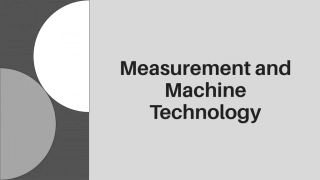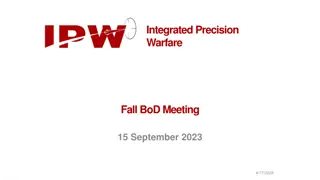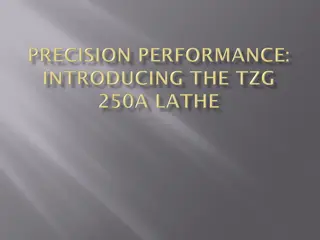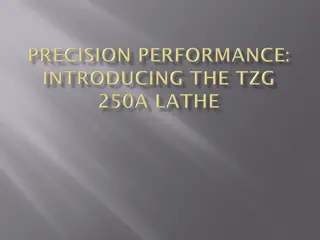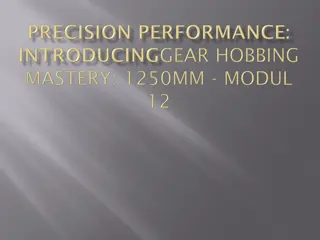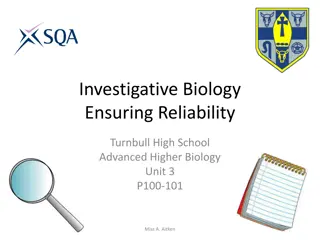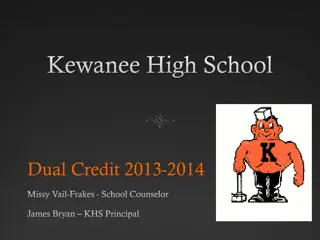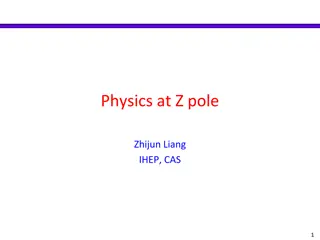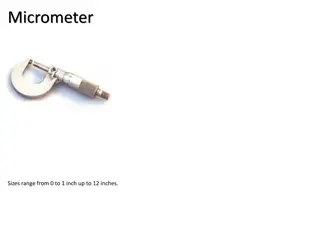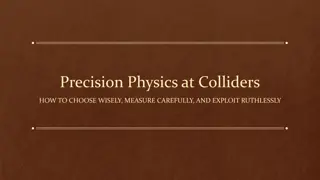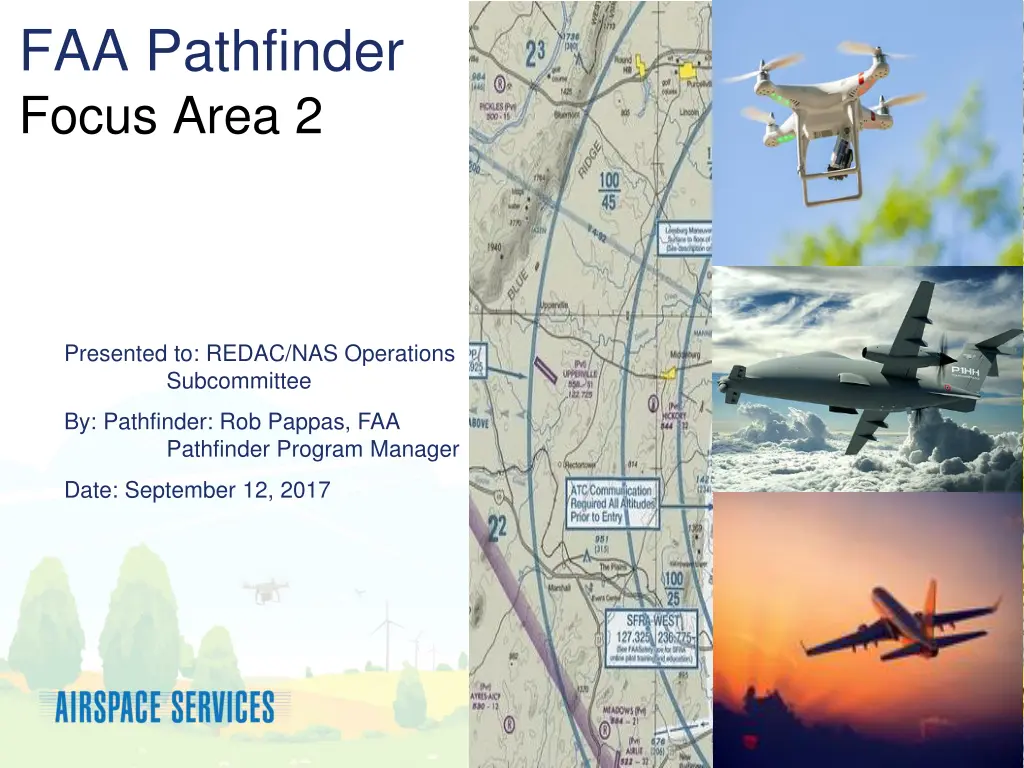
Exploring Extended Visual Line of Sight (EVLOS) Operations in UAS Technology
Uncover the significance of Extended Visual Line of Sight (EVLOS) operations in the realm of Unmanned Aircraft Systems (UAS). Learn how EVLOS expands commercial applications, such as agriculture, infrastructure inspections, and emergency responses. Discover the benefits and phased approach towards achieving successful EVLOS capabilities.
Download Presentation

Please find below an Image/Link to download the presentation.
The content on the website is provided AS IS for your information and personal use only. It may not be sold, licensed, or shared on other websites without obtaining consent from the author. If you encounter any issues during the download, it is possible that the publisher has removed the file from their server.
You are allowed to download the files provided on this website for personal or commercial use, subject to the condition that they are used lawfully. All files are the property of their respective owners.
The content on the website is provided AS IS for your information and personal use only. It may not be sold, licensed, or shared on other websites without obtaining consent from the author.
E N D
Presentation Transcript
FAA Pathfinder Focus Area 2 Presented to: REDAC/NAS Operations Subcommittee By: Pathfinder: Rob Pappas, FAA Pathfinder Program Manager Date: September 12, 2017
Background and Purpose Early in 2013 the UAS Executive WG considered novel approaches to permit civil UAS operations beyond those envisioned in the small UAS rule Approach would preclude reliance on rulemaking, major acquisitions or technical solution to onboard sense and avoid In August 2014 three broad regimes (pathfinders) were identified: Pathfinder Focus Area 1: Visual Line of Sight (VLOS) over populations Pathfinder Focus Area 2: Extended Visual Line of Sight (EVLOS) and in fixed, well-defined, limited area Pathfinder Focus Area 3: Beyond Visual Line of Sight (BVLOS) In March 2015, PrecisionHawk Inc., approached the FAA to be the Pathfinder 2 industry partner A Cooperative Research and Development Agreement (CRDA) with the FAA and PrecisionHawk was signed on June 12, 2015 2
What is Extended Visual Line of Sight (EVLOS)? BVLOS EVLOS VLOS Extended Visual Line of sight (EVLOS) Beyond Visual Line of sight (BVLOS) Visual Line of sight (VLOS) Extended Visual Line of Sight (EVLOS) is an Unmanned Aircraft System (UAS) operation whereby the Pilot in Command (PIC) and/or the observer maintains an uninterrupted visual situational awareness of the airspace in which the UAS operation is being conducted, for encroaching aircraft. The Aircraft may be operated out of sight of the PIC and observer, but must be kept in a defined area of operation, with control authority being maintained by the PIC at all times. 3
Benefits of Expanded Operational Envelope Ability to operate outside of the pilot s immediate line of sight expands a wide range of commercial uses Agricultural applications Infrastructure inspections Emergency response applications 4
Step IIII-Phase III Flight test and data collection 5
Phase Phase I & II Overview I & II Overview Phase I Phase I Research focused on identifying Research focused on identifying the range where an intruder aircraft could range where an intruder aircraft could be visually identified be visually identified. . the Phase II Phase II Research focused on the PIC ability to Research focused on the PIC ability to react to an intruder aircraft within react to an intruder aircraft within the EVLOS range. the EVLOS range. 7
Extended Visual Line of Sight Extended Visual Line of Sight Sun Position: Sun Position: Altitude of sun > 45o above the horizon VFR meteorological conditions VFR meteorological conditions Visual angle Visual angle < 5 degrees in quadrant centered on UA location PIC location PIC location free of significant noise pollution (i.e. generators, farm equipment, trucks) PIC qualifications: PIC qualifications: Meets all Part 107 requirements 15-20 hours VLOS flight time in desired operating environment on the specific UAS (both aircraft and GCS). In-field flight training in EVLOS operation from an EVLOS-experienced operator (~2 or 3 short sorties and 2 or 3 longer ones is enough to establish the appropriate strategies necessary for EVLOS flight) + + + + + 8
Data utilization Enable more operation through issuance of a waiver Develop a standard Inform the rulemaking initiative 8
Gaps Collected data remain underutilized for purposes of informing future Advisory circular, policies, and rules Repeatable process yet to be established. Communication between Policy Offices needs improvement to be effective 9
Phase III concept maturation Localized BVLOS Technology based Localized BVLOS operation enabled. Test Technological capabilities LATAS LTE GPS others Phase III research Plan Purpose: Evaluate the impact of assistive technology on operational risk associated with flight of sUAS in BVLOS applications in the NAS 10
Operational risk assessment Inherent Risks Technological malfunctions Improper utilization of technology ( Human factor) Operational environment complexity 11
Locations for Research PrecisionHawk Flight operations Raleigh, NC Kansas State University flight operation Salina, KS Mississippi State flight operation Starkville, MS MITRE human in the loop display simulation testing Online simulation for pilots in the many locations McLean, VA 12
Phase III Milestones timeline Flight test in complete Raleigh MS, KS and VA flight test & simulations , starts in May Flight tests and simulations complete by September 31st Data analysis complete by, October 31st, Final Report by, December 30th 13


